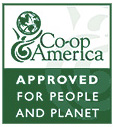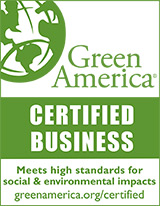Wool
What is Eco Wool? Eco Wool is wool used in the production of the Good Night Home brand of comforters, pillows, mattress pads, mattresses and futons.
Eco Wool
Is wool that has not been subjected to the harsh chemical cleaning process called carbonization. Carbonization is used in the production of most wool products today. Our special Eco Wool is washed simply, in large washing machines with soap and very hot water, assuring you that you're not getting anything other than wool in it's purest form. Throughout the packing, cleaning and carding process, care is taken to eliminate chemical processes and maintain uniform quality. Buying products made with Eco Wool encourages sheep ranchers and the wool industry to raise and maintain their flocks naturally and without chemicals, hopefully, encouraging a more eco-friendly wool industry.
Why Wool?
Wool is the most complex, breathable fiber on earth, responding to your body temperature by not overheating, as down tends to do. Down does not handle moisture well, loosing its insulating properties, clumping and separating as it collects moisture. Wool is a perfect insulator – worn in many areas of the world to keep warm, yet the Bedouins of the Sahara wear wool because it keeps them cool. Dust mites love down because they thrive in dark damp places. Wool does not provide the damp medium for them to thrive. Wool is a bit weightier than down and will not slip around on the bed. Our mattresses and comforters are constructed of full size layers of batting, hand tufted and/or machine sewn into position so it will not bunch or separate leaving cold spots. Wool is naturally fire retardant, allowing Good Night Naturals to offer you our mattresses completely natural and absolutely chemical free!
The History of Eco Wool
It began at a ranch located in the coastal region of northern California, where the average rainfall is over 40 inches per year. Sheep which thrive in this climate are coarse-grade wool sheep. Their coarse wool, with a 28 to 34 micron count, easily sheds the heavy rains of this region and keeps the sheep warm. The sheep breeds with this type of wool are traditional British breeds, including Dorset, North Country Cheviot, Romney, Suffolk, Hampshire, and Border Lester.
Historically, there was not much interest in this type of wool in the world market, because it was too coarse to be used in a traditional end product, such as clothing, blankets or other textiles. Rancher Joe Pozzi and locale bedding manufacturer, Ilianna Jantz began exploring opportunities to use this type of wool. They discovered that the coarse wool is ideal for bedding products. The fibers in coarse wool creates a very full and lofty material for mattresses, pillows and comforters. The wool has provided another option for consumers who want a high quality natural product.
A New Standard
In 1993, with the assistance of various educational, business and government interests a new set of standards for wool were developed. The standards define how the animals are cared for, how the natural resources on the land are cared for, and how the wool is harvested from the sheep. These standards were developed to assure our customers were getting the highest quality product, while making sure the ranchers raising the sheep were being responsible in their business practices. In our opinion, the key standard is that Eco Wool is NOT Carbonized. Carbonization is a type of scouring, or cleaning, that employs a chemical bath. The bath includes hydrochloric acid, to be specific, plus other chemicals. Eco wool is simply cleaned in hot water and non-toxic soaps until the wool is clean and ready for processing.
Understanding Wool Processing
Regional Wool Growers
Having a personal relationship with each of our wool-growers is mutually beneficial. Together we have developed an evolving set of guidelines:
- Proper grazing methods: Our growers rotate sheep to different pastures to allow vegetation to recover from grazing. These farms also don’t overstock their pastures.
- Predator-friendly: Predators play an important role in maintaining healthy ecosystems. Therefore, we encourage growers to use trained sheep guardian dogs rather than trapping, poisoning or shooting.
- Animal welfare and husbandry: Ethical practices are a must, and fortunately this is an area where we and our Eco Wool producers are in absolute agreement. Ideal climate and range conditions translates to healthy flocks.
- Chemical control: We oppose the use of herbicides and pesticides. Random spot-testing helps determine if wool has been in contact with harmful chemicals.
In addition, together, we and the growers strongly oppose carbonizing (using strong acids to dissolve vegetable matter), chemical crimping, dipping (bathing sheep in a pesticide solution), bleaching, harmful shearing, mulesing (cutting patches of skin of sheep to discourage infection), and overgrazing.
Shearing
Shearing is the act of harvesting wool fleece from a sheep. The wool fiber is a hardened protein and does not contain any sensory structures. This is generally done in the spring when the sheep no longer need their winter coat.
Annual shearing benefits both the sheep as well as us humans. Shearing in the spring allows the sheep to begin growing their wool in time to have a full coat by winter. Without shearing, the animal may potentially suffer from excessive wool growth.
Too much wool may result in manure or feces accumulating on the wool and encouraging fly egg development. The resulting fly larvae can cause serious harm to the animal and potentially death through infection. Additionally, too much wool can contribute to heat stress in warmer climates.
Spring shearing also prepares the sheep to have at least 1 inch of wool on their coats in the summer. Having a bit of wool on the sheep in the summer, rather than none at all, allows the wool fiber to dissipate heat more quickly.
Read more about how wool is able to regulate temperature.
Cruelty-Free Wool Processing
Shearing quickly and without cutting the sheep is a skill that takes practice. We work with the most skilled shearing teams to make sure that shearing goes smoothly.
We strongly oppose harmful shearing and mulesing. Mulesing involves cutting off patches of the skin off sheep (to discourage infection resulting from flies laying eggs in the folds). This cruel practice is primarily associated with Australian Merino sheep.
Our wool is exceptionally clean because we require extra steps to sort through grease wool before sending it off to be scoured (washed). Skirting, grading, and baling the wool helps us to retrieve only the finest natural fibers for our customers.
Skirting, Grading & Baling
Skirting
Once the fleece is removed from a sheep, it’s passed to a skirting table. At the skirting table, dirtier parts of the fleece from the sheep’s belly and rear are removed. This less desirable wool is put aside and sold for different purposes.
At this point the wool is called “grease wool.” Grease wool is still quite dirty and greasy with lanolin. Lanolin is the oil that sheep produce to protect their skin and make their coats waterproof. Read more about the characteristics of the wool fiber.
Grading
The grease wool is also “graded.” Wool grade is determined by fiber thickness and the amount of debris in the wool. This information helps buyers purchase the correct quality and type of wool.
There are three major grading systems that have evolved over the years:
- The Blood System is the oldest, originating at the time of the early American colonies. It is based on the bloodline or breeding of sheep.
- The Count System is more extensive and involves the number of “hanks” of yarn that can be spun from one pound of wool. A hank is 560 yards.
- The Micron System is the most technical and accurate system of grading. This system separates wool into grades according to the average fiber diameter as measured by a micrometer.
We use the Micron System almost exclusively. Our batting is comprised of several micron ranges and staple lengths. By blending the fiber this way, we are able to create exceptional resilience and loft.
Baling
Skirted and graded grease wool is then stacked and pressed into bales for more efficient shipping. Each bale contains about 500 pounds of grease wool from up to 100 sheep. Once all the spring clip is sheared, skirted and baled, it’s collected at our facilities and labeled for transport.
Mixing and Scouring
Once the wool has been skirted, graded and baled, it’s transported to a scouring facility to be cleaned. The process of washing grease wool is called “scouring.”
Our domestic Premium Eco Wool is scoured in the United States, while our organic wool is scoured in New Zealand, where the wool originates.
At the scouring facility workers open bales of wool, pull out each fleece and skirt the wool once again. Next, the wool goes through huge shakers. The shakers remove loose dirt before the wool is plunged into soapy tubs of water.
At both plants, our wool is washed according to our special requests. In both cases, a mild, biodegradable soap is used. This soap is compliant with strict GOTS standards. We also ask that the scouring line is slowed down so that the wool is more thoroughly cleaned and rinsed. Slowing the wash process removes dirt and residual detergent more thoroughly.
The wool then passes through tubs of increasingly clean water until it reaches the end of the scouring line. After passing a careful inspection, the wool is then dried and baled for return to our California carding mill. You’d be surprised to learn that after removing so much grease and debris, we are left with about half the weight of wool!
Picking and Carding
After proper cleaning, the wool is shipped back to our California carding mill where it’s transformed into ready-to-use wool. We run the wool through a unique series of machines that comb and fluff the wool while also removing any remaining vegetable matter.
Little burrs and bits of plants get tangled into the wool and will not come out with simple washing. While many facilities use harsh chemicals to remove this matter, we avoid the use of chemicals with more sustainable practices.
Prior to carding, we avoid the use of chemicals by initially purchasing cleaner wool and skirting their wool multiple times. Once the scoured wool reaches the mill, we then rely on our incredible carding machines to create unbelievably clean wool batting.
Preparing for Carding
The first step in carding is to feed the wool through a “picker” machine. The picker pulls apart the dense bales of wool. This process reintroduces air to the wool and begins to loosen any remaining vegetable matter. Picking wool also continues to mix and blend the wool.
The Final Stage
After picking, the wool is then fed into carding equipment. The wool is processed through a three-breaker carding machine to comb the wool thoroughly. During this state, the wool methodically goes from coarse to fine.
Additionally, huge metal cylinders crush plant matter and help to move debris. The carders loosen and comb out plant matter as well as short and weak fibers.
The detangled wool is eventually brushed into thin sheets with all the fibers aligned in one direction. The last component of the carding machine, the “lapper,” layers the thin sheets of wool until they reach the desired thickness and width of batting.
Find relief with Wool.
Due to this hollow, water thirsty fibers ability to efficiently wick away sweat, bedding made with Wool promotes dry, comfortable warmth all evening long. (See Good Night Naturals Comforters, Mattress Pads and Pillows). On average, through perspiration and breathing, an adult can loose up to a pint of water vapor during a normal night of sleep. Menopausal women can loose even more than that! Without the proper bedding and mattress with the ability to absorb moisture, a high body humidity level can raise heart rate and blood pressure. Additionally, if you or your mattress feels damp or clammy it is likely you will toss, turn or awaken. The Health Benefits of Wool.
There is help. Wool, with its hollow fibers can effectively wick away moisture that your body looses all night long. Wool can absorb up to 30% of its own weight in moisture (10 times as much as synthetics) without showing signs of dampness. And with the proper care of wool bedding and mattresses, captured moisture is released back into the air. Tests at the Polytechnic Institute of Wales, featuring wool versus synthetic fibers, revealed that the heart rates under wool filled comforters were significantly lower 100% of the time. Furthermore, when under a wool comforter, skin humidity was significantly lower 71% of the time. Call one of our knowledgeable customer service associates to inquire about the Good Night Naturals line of mattresses, comforters, mattress pads and toppers. Call with your questions or for more information: 866-388-5154. See Eco Wool










